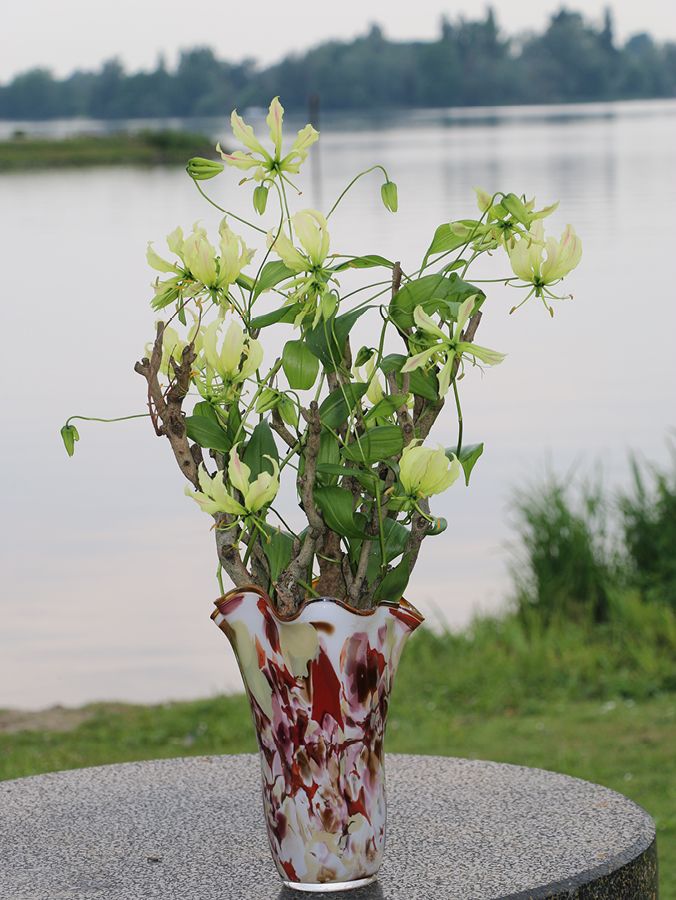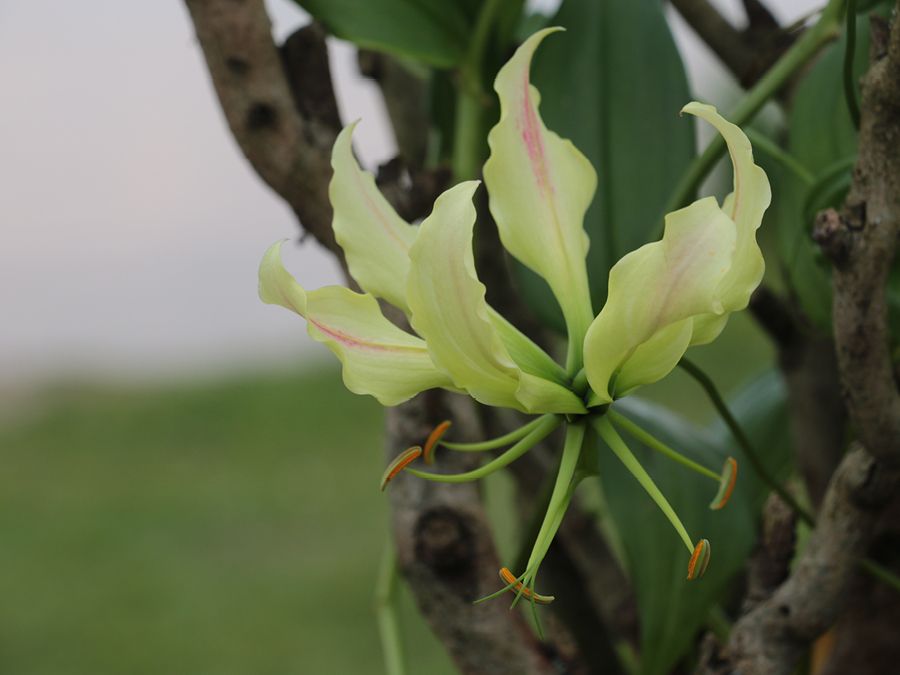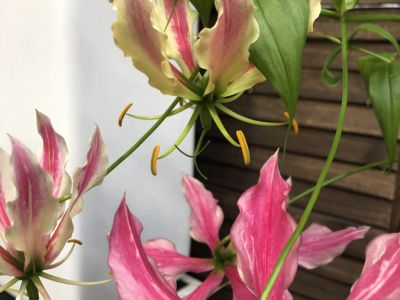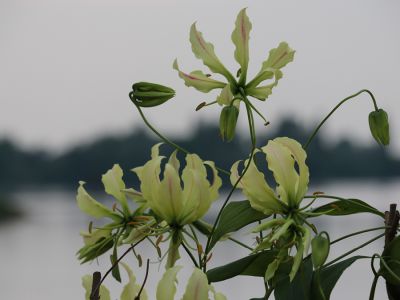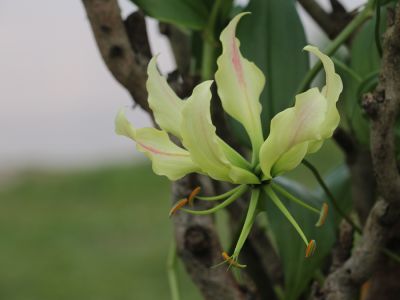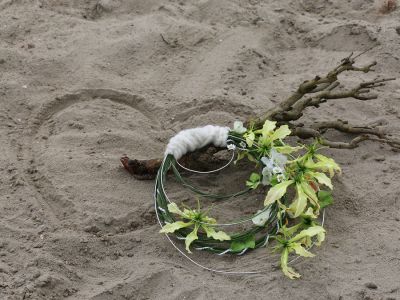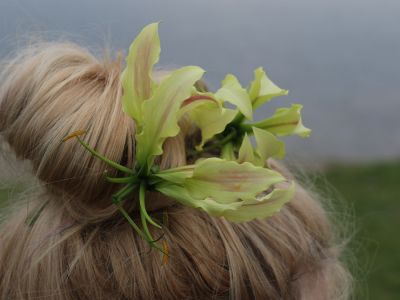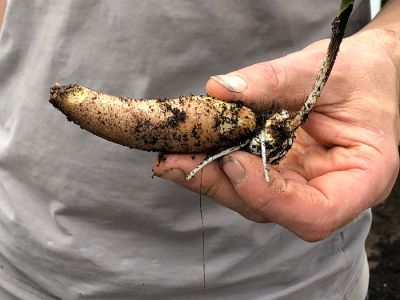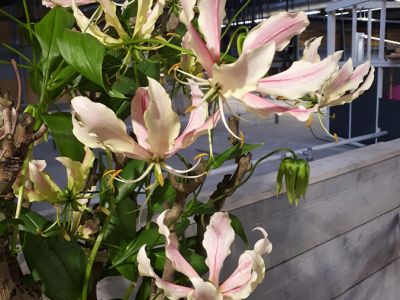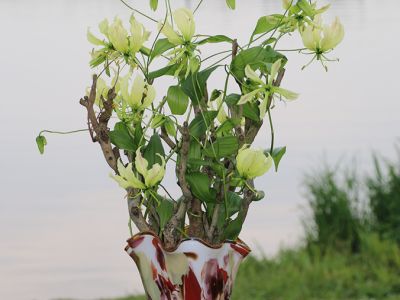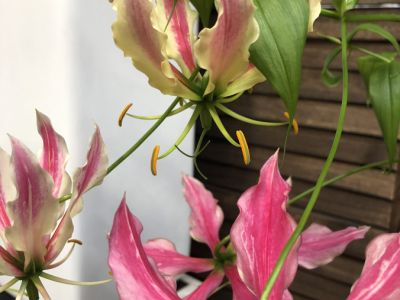Gloriosa Lime
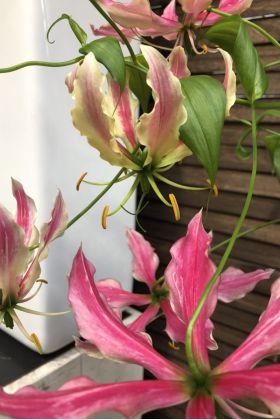
Calendar
The Gloriosa 'Lime' is available from March to July
VBN code: 114432
Barendsen colour number: Lime Green
Length: 2, 7 or 8
In the spotlights
A few weeks ago, the FloraPodium was introduced to a new species of the Gloriosa family. Of course this product got a nice spot with us. This beautiful elegant flower surprised us every day. Put in the vase as a lime-colored flower, turning a beautiful shade of pink after a week. This enchanting color change made us extremely curious about the story of this kind. We visited the nursery Gloriosa van Ruiten, where we looked for answers and facts about this magical product!
Small scale as a force
The Gloriosa, also called 'Splendor Lily', is family of the lily-like and originates in India and Africa. The flower occurs naturally in many colors and is a real 'eye catcher' in a bouquet. The petals and stamen dance around each other in an elegant way. The special thing about the Gloriosa is that it is a climbing root vegetable.
Richard van Ruiten, from nursery Gloriosa van Ruiten, grows about fifteen different species of Gloriosa himself, all on a small scale. A Gloriosa is a root vegetable that makes two new tubers at the moment they bloom. The old tuber has then grown empty and can no longer be used. As a result of this process, growth and the propagation of new varieties are slow. He therefore only has a hundred plants from some species. This makes his products extra special and exclusive. Breeding the Gloriosa is a real hobby for Richard. He never had the ambition to have a big company: "I would rather just own it myself; I do not want to become a factory."
After his school time, Richard went to work as a florist at the renowned company Joop and Ria van Leeuwen, but unfortunately he became allergic to various flowers. Because his father became ill at that time, his mother took over the nursery for a while.
However, Richard wanted to travel himself. He found his golden combination in traveling to New Zealand, Thailand, Africa and China and in addition the breeding of the Gloriosa. During his travels Richard is always looking for beautiful Gloriosa tubers, with which he breeds new varieties himself. 'Sparkling Kato', 'Sparkling Jip' and 'Sparkling Saar' are named after his three daughters.
Richard does not have any staff at the moment, "I want to stay in touch with the product myself." Richard thinks that the small scale of his company is beautiful and will continue the breeding of new varieties enthusiastically. Only his father and mother still help in the company.
In the spotlights
In this weeks’ Spotlights we present the Gloriosa 'Lime'. This enchanting appearance has naturally also arisen from one of his own crosses. However, Richard does not only want sole credit or claim that he is the only one with this crossing. Perhaps they have already discovered this kind in Japan, since they are specialists in the breeding of Gloriosa.
The coloring of this type in the vase was also a surprise for Richard himself. "Probably this has to do with the original color of the different species that are crossed in the origin of this product."
When the flower is cut, it’s lime colored, which is the stage in which is it sold. Once in the vase, the lime green flower discolors, first back to white. From the white the flower slowly turns pink, so that after a week in the vase it has a beautiful dark pink color. How magical can a flower be?
On average, a branch of Gloriosa with a spring of eighty centimeters with three heads is sold. The first flower is open and the other two flowers are still in the knock. As a result, this beauty certainly has a vase life of ten days or more.
The Gloriosa can be processed in many different ways. The short branches are especially suited for weddings or small vase arrangements. The longer branches are incredibly graceful, as the stems are far from straight. They look lovely ‘dancing’ in large flower arrangements. Or simply as a one-stem bouquet with a single stem in a vase. The flower has such an interesting appearance itself, that it does not need much to shine. The versatility of this product is extremely large.
Gloriosa is treated like all other cut flowers. You cut them diagonally and put them in a vase with clean water and cut flower food. The short Gloriosa (20cm) can sometimes sags when they come from a flowpack package. If this happens, you have to cut them diagonally and put them completely into a bucket with water for 15 to 20 minutes. Then you shake off the water and you can put them in a cooler that is not colder than 7 ° C degrees.

The Cultivation
All year round Richard is busy cultivating the different species of Gloriosa. He harvests 7 days a week to guarantee the best quality. The harvest period takes place from half until mid-November. This actually has everything to do with the light.
The first tubers are planted in January. It takes about twelve weeks before the flower can be harvested. The bulbs that are planted in the spring only take 6 weeks to grow into a flower. This has everything to do with the number of sun hours and light intensity that reaches the greenhouse. After harvesting the flowers, the tubers remain in the ground for ten to twelve weeks, so that the new tubers can develop well.
Richard therefore has tubers in the ground all year round, so the greenhouse is not allowed to fall below the temperature of ± 19 degrees. Richard has adjusted his cultivation schedule so that there are no more flowers in the low-light period (after November 15). That way he keeps the best quality. If the buttons get less than ten or eleven hours of light per day, they dry out. This is because not enough sugars are produced in the buds. If you filter too much sun on light days by means of a screen cloth, the buds can also dry out. However, too much light is not good either! A system in the greenhouse calculates exactly how much light enters. If there is too much light a cloth is put up to filter the sunlight. .
A branch gives different flowers; the first ripe flowers are picked as short Gloriosa. If a branch has 3 more buds at the top, the branch is picked as long Gloriosa. It has no added value to deliver a flower with more than three buds; these do not have the power to open on the vase.
The planting and harvesting of the tubers takes special skills, it requires the necessary accuracy. A growth point is visible on each tuber, which is very fragile and can therefore be damaged quickly. Richard grows the Gloriosa both in the soil and in pots in substrate. The process of cultivation in full soil is much harder to control. The water supply, fertilization and climate can be better controlled in a pot. However, full soil gives more power to the flower than the substrate. Richard therefore chooses to grow only the small tubers, which can use a little more power, in full soil. In this way these tubers get the chance to become a good strong flower. The larger tubers are put in substrate.
Richard tries to grow organically as much as possible by putting out good critters. This can be difficult at times, because more and more harmful insects are found due to the extremely warm weather conditions. In extreme weather, biological control can no longer keep up, and some spraying is necessary to get rid of these insects.







